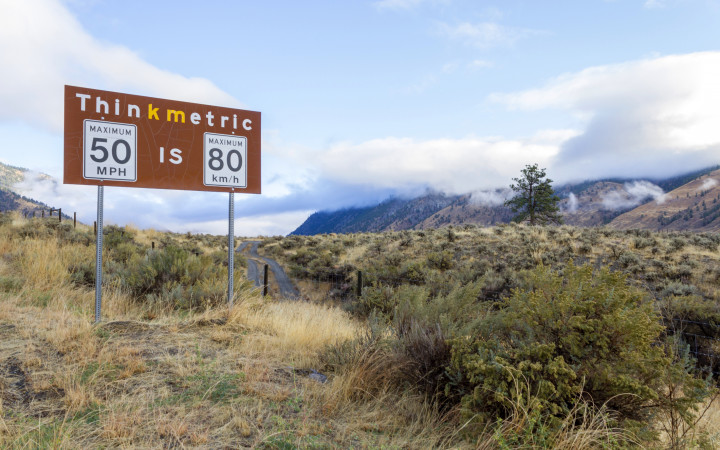Today’s Wonder of the Day was inspired by Moshe. Moshe Wonders, “Why don't we use the Metric system?” Thanks for WONDERing with us, Moshe!
If you ever have a chance to visit another country, take it! You’ll see many new things. Every place has its own culture and history. People do many things differently based on where they live. In some places, people elect a president. Others elect a prime minister. Some people walk on a sidewalk while others travel on a footpath. Even measurements vary by country! In some places, we measure distance in miles. In others, we use kilometers.
What’s the difference between a mile and a kilometer? One mile is about 1.6 kilometers. They are part of different measuring systems. The mile is part of the Imperial System. On the other hand, the kilometer is part of the Metric System.
Have you ever heard of the Metric System? It’s used in most of the world. In fact, only three countries still use the Imperial System--the United States, Liberia, and Myanmar. The Metric System has many units of measurement. Meters measure length, grams measure mass, and liters measure volume. If you’re used to measuring in feet, pounds, and gallons, this may be new to you!
The Metric System’s use of prefixes makes it a little easier to understand. Adding a prefix to a unit of measurement makes the unit larger or smaller. It’s like changing a mile into feet or inches. To do that, we have to know there are 5,280 feet in one mile. Then, we need to remember that twelve inches make a foot. In the Metric System, you just have to remember the prefixes. They’re based on tens, and they work across all units of measurement. Here are a few of the most common prefixes and what they stand for:
kilo -one thousand
hecto -one hundred
deca -ten
deci - one-tenth
centi -one-hundredth
milli - one-thousandth
How does this work? If you add kilo- to a unit of measurement, that makes it one thousand times bigger. A kilogram is one thousand grams. A kiloliter is one thousand liters. A kilometer is… You guessed it! One thousand meters. It’s that simple!
You can also make measurements smaller. If you add centi- to a unit, it makes it one-hundredth of that unit. Have you ever heard of a centimeter? It’s one-hundredth of a meter. Likewise, a centigram is one-hundredth of a gram, and a centiliter is one-hundredth of a liter.
There are many other prefixes we can use in the Metric System. You’ve probably used many of them without even knowing! Have you ever heard of a megabyte? It’s a common measurement of memory space. The prefix mega- means one million, so a megabyte is one million bytes. If we told you the prefix giga- means one billion, how many bytes do you think a gigabyte is? That’s right, it’s one billion bytes.
Are you ready to jump into the Metric System? You’re not alone! Many people around the world use the system. A great way to start is by practicing conversions on ordinary items. If a can of soda contains 350 milliliters, how many liters is that? If one metric ton is 1,000 kilograms, then what does it weigh in grams? Once you get started, maneuvering the Metric System just gets easier!
Standards: MATH.5.MDA.1, CCRA.L.3, CCRA.L.6, CCRA.R.1, CCRA.R.2, CCRA.R.10, CCRA.W.2, CCRA.W.9, CCRA.SL,1, CCRA.SL.2




